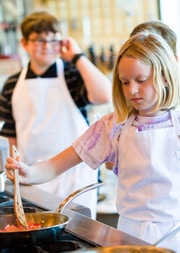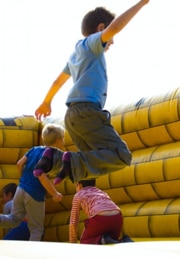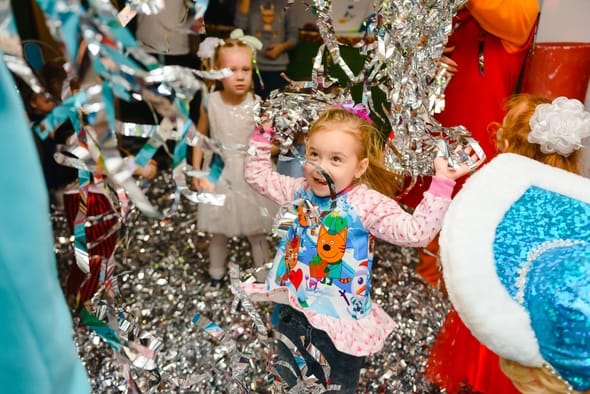Tips for Teaching your Child to Ride a Bike
Riding a bike is a great way for kids to get exercise and have fun. It’s also a major confidence boost for them to achieve such an accomplishment, especially when all their friends are learning as well. Some kids have more trouble than others and it can be a bit daunting for parents who are new to the process of teaching their children how to ride.
Luckily, we have put together 10 helpful tips that will make the journey easier and enjoyable.
How to Teach Your Child to Ride a Bike
Whatever special challenges your child may be facing when learning to ride a bike, they are not alone. Every kid has reservations and at least a tinge of fear. You can help calm their concerns by explaining that you will be along their side every step of the way, making sure they are kept safe.
1. Safety First: Check Bike Setup, Clothing, and Helmet
Before you start the process of teaching your kid to ride a bike, it’s important to make sure the bike is set up properly. The following tips will help you do just that:
- Make sure the seat is at the right height. It should be positioned so that when your child is sitting on the seat, their feet can reach the ground.
- Check that the handlebars are at the correct height and angle.
- Make sure the chain is lubricated and there is no rust on any of the parts.
- Inflate the tires to the proper pressure.
It’s also essential to ensure your youngster is wearing the appropriate clothing, such as a helmet and that they are wearing shoes that will protect them if they fall. A good helmet is an important part of preventing head injuries in the event of a fall.
2. Learn Balance Speed Without Pedals
When your child is first starting to learn how to ride a bike, it’s important to focus on teaching them balance and speed before adding in the pedalling component. One way to do this is to have them ride without pedals at first. This will help them get used to the motion of riding a bike and help them build up their speed and balance. Once they’ve mastered this, then you can add in the pedals and help them learn how to use them effectively.
3. Steering the Bike
Now that your child is able to balance on a bike, it’s time to start working on steering. This involves getting comfortable with using the handlebars to control the direction of the bike.
- Start by having your child hold the handlebars and steer back and forth while standing next to the bike.
- Next, have them sit on the bike and hold the handlebars while you push them from behind.
Encourage your child to keep steering even when they’re going straight. This will help them get a feel for how the handlebars work.
4. Put the Pedals Back On
Once your child has mastered balance, it’s time to add in the pedals. This can be a little more challenging, so it’s important to take it slow. Start by adding the pedals back on the bike. Have your child stand next to the bike, holding onto it for support.
Show them how to place their feet on the pedals and explain how the pedals work. It may be helpful to demonstrate yourself first. Once they understand how it works, let them give it a try. They may need a little help getting started, but soon they should be able to pedal on their own.
5. Braking! Stopping Without Falling
When your child is first learning to ride a bike, you will need to teach them how to stop without falling. One way to do this is by teaching them how to brake. There are two types of braking: front and rear.
Front braking is the most common type of braking. This type of braking involves using the front brake to slow down or stop the bike. Rear braking is less common, but it can be useful in certain situations. This type of braking involves using the rear brake to slow down or stop the bike.
When teaching your child how to brake, it is important to start with front braking. This will help them get a feel for how much pressure to apply to the brake lever. Once they have mastered front braking, you can then teach them rear braking.
6. Choose a safe area to learn.
When you and your child are ready to start learning how to ride a bike, choose a safe, open area like a park or playground. This will give them plenty of space to practice without having to worry about cars or other obstacles.
7. Consider the teacher.
When it comes to teaching your child how to ride a bike, nothing is more important than finding the right teacher. Vuly play has some of the best bikes for kids on the market, and our team of experts is more than happy to teach your child how to ride.
8. Check the seat height again
Once your child is on the bike, their feet should be able to touch the ground with a slight bend in their knees. If they can’t reach it, lower the seat. Conversely, if their legs are fully extended, raise them. You want them to be as comfortable as possible while still being able to pedal and maintain control of the bike.
9. Consider a bike skills course
If you want to give your kid the best chance of mastering how to ride a bike, consider enrolling them in a bike skills course. Vuly play offers bike skills courses for kids of all ages, and our experienced instructors will help your child learn the basics of riding a bike quickly and safely.
10. Safety First, and Last
It is important to remember that safety is the number one priority when teaching your child to ride a bike. Make sure they are wearing a helmet and that the area is clear of traffic before letting them go. Explain the importance of staying safe while riding and be sure to enforce these rules once they start cycling on their own.
Summary
It can be a challenge to teach your kid how to ride a bike, but following these tips can make the process easier. Make sure the bike is the right size for your child, and help them practice balancing by having them stand on the bike with both feet on the ground. When they’re ready, have them start pedalling slowly while you hold the bike steady. As they gain confidence, they can start pedalling faster and let go of the handlebars. Soon, they’ll be riding on their own.
More to Read:
How great activities like riding a bike can boost the mood of your child.
Explore the world of kids motorcycles and mini chopper bikes.








